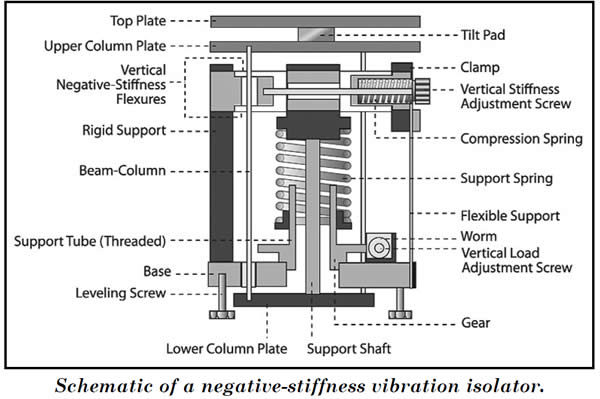|

Negative-Stiffness Vibration Isolation Aids High-Resolution
Microbalancing

Materials engineering
addresses the fundamental physical and chemical basis for the controlled
combination of atoms to form new compounds, phases, and microstructures, as
well as the characterization of the resulting structures and
properties.
The ultimate goal is to optimize the performance of a
material for a given design application by manipulating the structure,
processing and property relationship. Forwarding this initiative is the
Materials Engineering (MATE) Department at California Polytechnic State
University (Cal Poly), San Luis Obispo, which is the only primarily
undergraduate materials engineering program of the 53 Materials Science and
Engineering departments in the United States. The MATE curriculum allows
flexibility with a breadth of electives and specialization in technical
electives.
MATE provides extensive hands-on experience for its
students, with state-of-the-art materials characterization and testing
techniques, including dynamic mechanical analysis, hardness testing, tensile
testing, optical microscopy and image analysis, thermogravimetric analysis,
X-ray florescence, environmental scanning electron microscopy, metallographic
image analysis. Fourier-transform infrared spectroscopy, and differential
scanning calorimetry.
High-Resolution Microbalancing
Supporting these precision methodologies and technologies at MATE
is the need for high-resolution microbalancing. A microbalance is an instrument
capable of making precise measurements of the weight of objects with relatively
small mass, such as on the order of a million parts of a gram.
We are
conducting experiments on a wide variety of materials at MATE that require the
use of high-resolution microbalancing, says Trevor Harding, department chair
and professor, materials engineering department at Cal Poly. For example, right
now we have researchers that are looking at magnesium oxide nanoparticles for
carbon dioxide sequestration.
They think they are synthesizing magnesium
oxide, and they think they are sequestering carbon dioxide, but they really
dont know that because they cant see the particles, because these are
nano-particles.
They are using a technique called Fourier-transform
infrared spectroscopy (FTIR) to try to pick up magnesium carbonate signals in
their samples, to determine if they are getting what they think they are
getting from their synthesis..
...
Negative-Stiffness
Vibration Isolation
MATE selected Negative-Stiffness vibration
isolation, developed by Minus K Technology, an OEM supplier to leading
manufacturers of scanning probe microscopes, micro-hardness testers and other
vibration-sensitive instruments and equipment. The companys isolators are used
by more than 300 universities.
Full
article...
|
